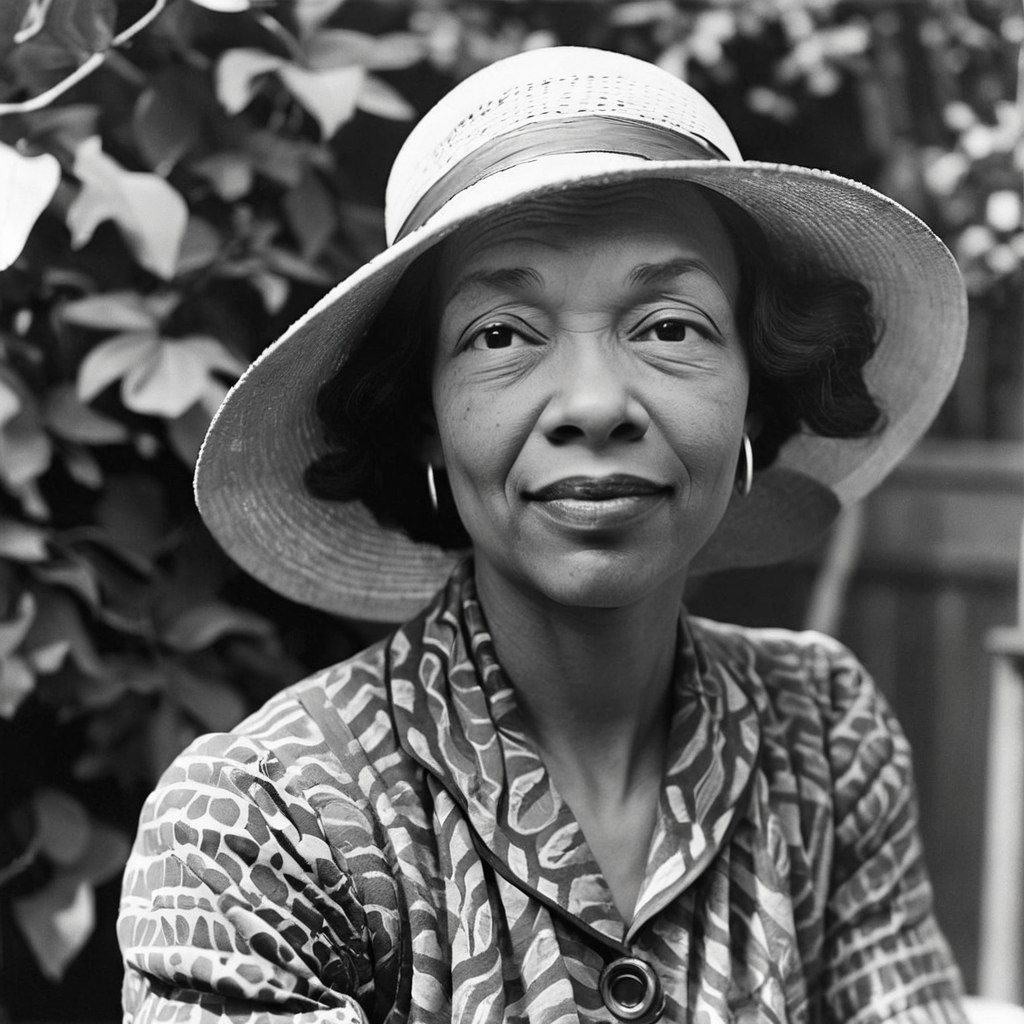Icons of The Harlem Renaissance
Harlem, New York was the Black cultural mecca of America between the 1910s and 1930s, a period defined as the Harlem Renaissance. The prolific era was the result of a percolation of Black talents situated in a three mile radius, where nearly 175,000 African Americans and people of the African diaspora lived. At the time, it was the largest concentrated population of Black people in the world. W.E.B Du Bois and Josephine Baker are just a couple of icons of the Harlem Renaissance that resided in this vibrant neighbourhood.
The Harlem Renaissance is celebrated for its lasting influence on culture, the betterment of life for Black people in America and laying the foundation for the civil rights movement of the 1950s and 1960s. Here we recognise prominent figures who played their part in one the biggest cultural phenomenons in history.
W.E.B Du Bois, Intellectual Giant and Activist
W.E.B Du Bois, considered as one of the greatest intellectuals of the twentieth century, was a scholar and activist. Du Bois studied History at Harvard University and went on to become the first man of African descent to receive a Phd from the university. During the Harlem Renaissance era, he along with other African American activists formed the National Association for the Advancement of Coloured People (NAACP) in 1909, which still thrives today.
As an activist, he wrote essays on race, society and economics, which were widely published by Black and white publications. Preceding the Harlem Renaissance, Du Bois wrote one of his most prophetic work in The Souls of Black Folks. In 1910, the NAACP launched its own magazine, Crisis, campaigning for the equal rights of Black people. The publication, edited by Du Bois for 24 years, sold 100,000 copies monthly, with contributors that included Langston Hughes and Countee Cullen. Du Bois was also a Pan-Africanist and visited Ghana a number of times. In 1960 he moved to Ghana, became a citizen and died there the following year.
W.E.B Du Bois,
Josephine Baker, The Trailblazing Entertainer
Josephine Baker, was a dancer, singer, actress and activist. Baker made history by becoming the first African American woman to star in a motion picture, achieving acclaim for her performances in film and on stage. She was amongst the ensemble cast of the 1921 Boadway production of hit musical Shuffle Along, written by 4 members of the NAACP. Baker used her dance career to highlight the discrimination and social injustice against Black people, often refusing to perform to segregated audiences.
Marcus Garvey, The Visionary Leader
Marcus Garvey, was a charismatic Pan-Africanist and ideological leader. In 1914, whilst living in London, the Jamaican established the Universal Negro Improvement Association (UNIA) to create unification of Africa and Africans in the diaspora, advocating for the end of European colonisation. His ideologies in the UK at the time, didn’t attract a following. After two years, Garvey set up branches of the UNIA in Harlem and other parts of the North, where Garvey’s message and ideas, which became known as Garveyism, resonated with Black America.
Harlem was his base, his dais. He campaigned for segregation, claiming it was for the advancement of Black people, Black pride and a Black economy. He never visited Africa, however emphasised the importance of a repatriation with the Back to Africa movement. His teaching and alliance with the leader of Klu Klux Klan (both believed in segregation) did not go down well with some of the other leading Black figures, namely with W.E.B Du Bois. They had a very public beef.
The command of Garvey and his Black pride movement against the backdrop of the Jim Crow era gained him a following of close to 2 million people. And with that came great power, for a moment. At the height of his influence he had his newspaper the New Negro, established the Negro Factories Corporation and the Black Star Line, plus a bevy of small businesses. In 1920, he famously led an international conference at Liberty Hall with delegates from 25 countries, followed by a 50,000 people strong parade in the streets of Harlem.
Marcus Garvey
Paul Robeson, Breaking Barriers with Brilliance
Paul Robeson, was an activist, lawyer, baritone singer and actor. Due to being subjected to racism at his law firm, Robeson quit practising law to be an actor full time. His first breakthrough role was in the 1921 Broadway musical Shuffle Along, which had a successful run playing to integrated audiences. Three years later, he braved death threats to take the lead in All God’s Chillun Got Wings, which featured an interracial romance. Robeson became an international star and continued throughout his long career to break barriers for actors and singers.
Paul Robeson
Augusta Savage, Elevating Black Art
Augusta Savage, was a sculptor and educator, who fought racism for her space in the art world. Savage began sculpting as a child in Florida, although violently opposed by her father. She moved to Harlem at the age of 30, leaving her teenage daughter behind to pursue her dream as an artist. Savage enrolled in a 4 year sculpting course, completing it in just 3, proving how gifted she was at her craft. In her pursuit to hone her skills, she applied for a prestigious one year course in Paris, which she was initially accepted on. Realising Savage was actually Black, her place was rescinded. This rejection was not taken quietly, she galvanised the press to cover her discrimination, establishing a name for herself within the Harlem elite circles.
Savage secured commissions to sculpt the busts of leading activists of the era such as Marcus Garvey and W.E.B Du Bois. However, her bust of a Black street kid titled “Gamin” is considered to be her career defining piece of art. Her work challenged the stereotypes of Black people in art by humanising their depiction. She had a special affinity towards working class children, capturing their playfulness and innocence, often intentionally underrepresented in the art world. In 1932, she set up an Arts & Crafts school in Harlem, teaching artists such as Gwendolyn Bennett and went on to open the first art gallery dedicated to Black artists. In 1934, Savage became the first African-American member of the National Association of Women Painters and Sculptors.
Augusta Savage
Zora Neale Hurston, Illuminating Black Culture Through Storytelling
Zora Neale Hurston, was a writer and anthropologist. Hurston broke the norms of the time by focusing her stories on the experiences of Black women. After studying in New York she befriended writers on the cusp of prominence such as Langston Huges and Countee Cullen and would go on to collaborate with them. Amongst the Black community, Hurston was a key figure; her short stories were cultural references and teachings popularly attended.
With works such as Mules are Men and Their Eyes Were Watching God, Hurston is considered one of the foremost women writers of the twentieth century. Unfortunately, the mainstream accolades came after she died. Langston Hughes, was a playwright, poet, novelist and political and social activist. His work famously captured the life and voices of everyday Black people in Harlem, fostering pride and cultural awareness within the community.
His writing challenged the stereotypes prevalent at the time and also exposed the racial injustice such as segregation, discrimination and economic hardship. His essay The Negro Artist and the Racial Mountain published in 1926, became the manifesto of the Harlem Renaissance. In it he proclaimed that nothing great would happen to Black people copying the whites. Instead, Black people should create from their own culture and be proud to be Black.
Zora Neale Hurston
Countee Cullen, Bridging Worlds with Poetic Grace
Countee Cullen, was a poet, playwright and novelist. He was considered one of the most influential and important voices of the Harlem Renaissance. Cullen excelled in a school dominated by white people and went on to do so again throughout his years studying at New York University and then Harvard, where he earned his Masters. His experience as a Black man in white spaces where he was respected and accolades poured, gave him a different view of society. The dichotomy of such created a romantic out of him imbued by the likes of John Keats. His poetry was admired and lauded by all and claimed fame in his very early twenties with works such as The Ballad of a Brown Girl and Color. However, some of his Black writer peers critiqued his work for not directly addressing the social injustices of his people. His poems were published by W.E.B Du Bois in Crisis and by major publishers such as Harpers. His talent emerged alongside Claude Mckay, Langston Hughes, Alain Locke and Zora Neale Hurston.
In 1928, Cullen married Yolande Du Bois, the daughter of W.E.B Du Bois. It was seen as the event of the decade, highly publicised and had over 3000 guests in attendance. The marriage was short lived. Whilst living in Paris, Cullen apparently confessed he was gay. Yolande filed for divorce.
Countee Cullen












